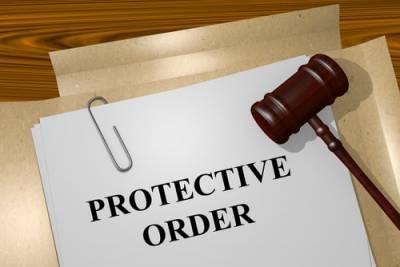How Does an Illinois Order of Protection Work?
 Orders of protection, sometimes called restraining orders, are court orders designed to prevent an abusive or harassing individual from further harassing his or her victim. The directions contained in a protection order vary, but many prohibit the person named in the order, the respondent, from contacting or coming within a certain distance of the person who requested the order, called the petitioner. If you or your children are victims of domestic violence, an order of protection may give you the space you need to escape the abusive situation. An order of protection is also a critical step in creating a formal record of the respondent’s harmful actions with the court.
Orders of protection, sometimes called restraining orders, are court orders designed to prevent an abusive or harassing individual from further harassing his or her victim. The directions contained in a protection order vary, but many prohibit the person named in the order, the respondent, from contacting or coming within a certain distance of the person who requested the order, called the petitioner. If you or your children are victims of domestic violence, an order of protection may give you the space you need to escape the abusive situation. An order of protection is also a critical step in creating a formal record of the respondent’s harmful actions with the court.
Emergency Orders of Protection Can Be Obtained Without a Hearing
There are three main types of protection orders available in Illinois: an emergency order of protection, interim order of protection, and plenary order of protection. An emergency order of protection (EOP) can be obtained without the respondent’s participation. This is called an 'ex parte' hearing.
To obtain an EOP, you will submit a petition for an emergency order of protection with your local county courthouse. In your petition, explain why you are seeking a protection order and describe the abusive or threatening actions the respondent has committed. An EOP lasts up to 21 days. The order can prohibit the abusive person from coming within a certain distance from or contacting you and/or your children.
The order may also require the person to surrender his or her firearms. The judge can set any other restrictions that he or she finds appropriate. When the court grants an EOP, it also sets a hearing date for a more permanent protection order called a plenary order of protection.
Interim Orders of Protection and Plenary Orders of Protection
A plenary order can last up to two years. You will need to attend a hearing in order to be granted a plenary order of protection. During the hearing, you will need to justify why you are requesting protection from the court. The respondent will have the chance to respond to the accusations leveled against him or her.
If the respondent does not show up to the hearing for a plenary order of protection, the court will most likely grant the order. If the court cannot get the hearing for a plenary order of protection scheduled before the EOP protection period ends, an interim order of protection may be entered. An interim order of protection can last up to 30 days.
Contact a St. Charles Domestic Abuse Lawyer
If you have been the victim of domestic violence, contact a Kane County family law attorney from Shaw Sanders, P.C. We can help you petition the court for an order of protection and explore your legal options. Call our office at 630-584-5550 to schedule a free, confidential consultation.
Sources:
http://www.ilga.gov/legislation/ilcs/ilcs5.asp?ActID=2100
https://courts.illinois.gov/forms/approved/protective_orders/Getting_Started_Petition_for_Order_of_Protection.pdf

 630-584-5550
630-584-5550







 630-584-5550
630-584-5550